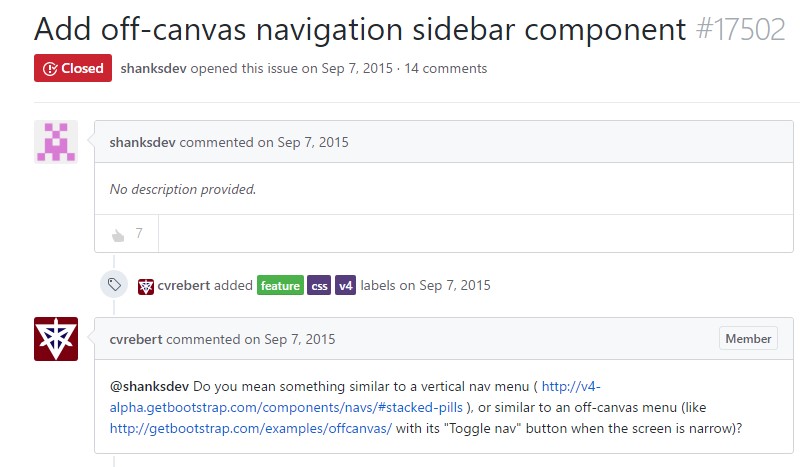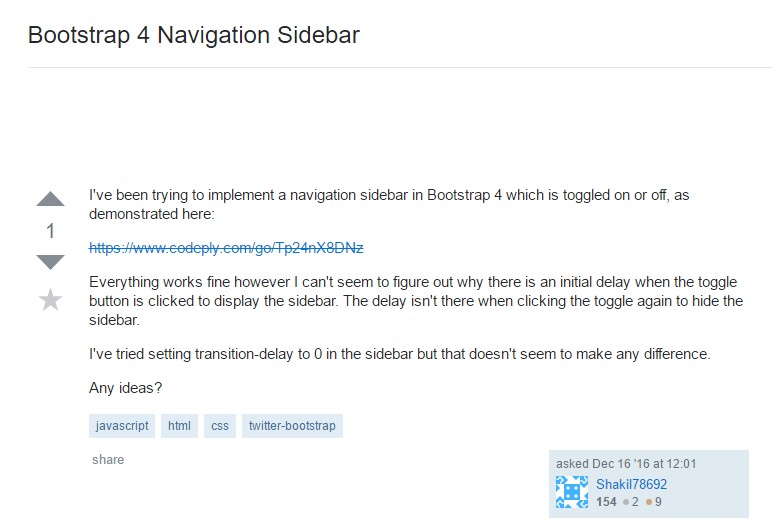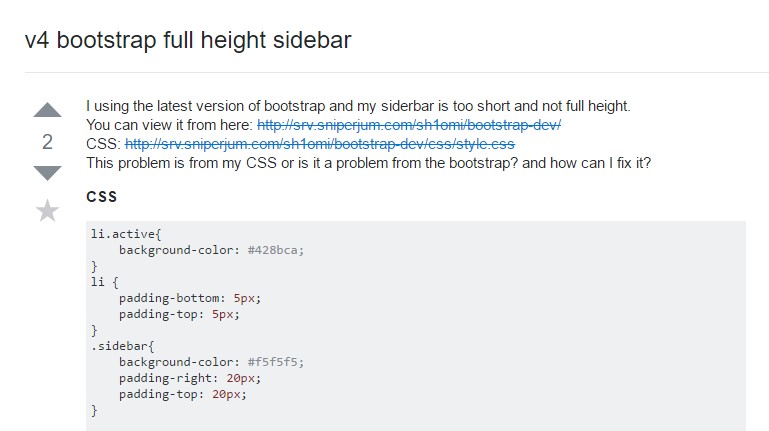Bootstrap Sidebar Submenu
Intro
Inside the majority of the webpages we currently discover the material spreads from edge to edge in size with a handy navigation bar just above and simply simply gets resized once the identified viewport is hit so that more or less the showcased information fluently employs the full width of the page available. Even so at a particular events the wanted goal the pages need to work in require together with the fluently resizing material place some other area of the obtainable display width to get assigned to a still vertical component along with certain urls and material in it-- in shorts-- the widely known from the past Bootstrap Sidebar element is wanted.
How you can use the Bootstrap Sidebar Responsive:
This is quite outdated technique but supposing that you really want to-- you can absolutely create a sidebar feature with the Bootstrap 4 framework which in turn along with its flexible grid system additionally present a few classes made particularly for making a secondary rank navigating menus being simply docked throughout the page.
But let's start it easy-- by simply just nesting some rows and columns -- It is expected this could be the simplest way. And also by nesting I mean you have the ability to gave a .row component set inside a column one-- it commonly behaves the identical method except for the provided columns in a single line limitation-- assuming that you nest a row inside a column you can surely have up to the column's width reaching inner columns inside it before they wrap to a new line.
So let's say we require a right aligned Bootstrap Sidebar Content along with some content in it and a principal web page to the left of it. We must set the grid tier down to what we wish to maintain this placement right before the sidebar and the primary information stack above each other-- let us claim-- medium and up. Therefore a workable approach attaining this could be this:
First and foremost we really need a container feature to maintain the rows and columns and considering that we are definitely building something a little bit more challenging the .container-fluid class could be the ideal one to specify it to-- by doing this it will certainly regularly spread over the entire detectable width provided.
Next we need to have a .row to cover the fundamental structure into which in our situation would certainly be a wide column for the information and a smaller sized-- for the sidebar-- let's say we'll break up the width in 9 by 3 columns in width. Therefore the first column element should carry .col-md-9 and the second one - .col-md-3 class utilized.
Next inside these types of columns we can just create some additional .row elements and stuff them up up with a number of material creating first the main page and after it-- the contents of the sidebar a lot like two smaller sized webpages laid out side by side.
A number of more ideas
Additionally in case you need to create a sidebar navigation menu along with the desired .col-* class you can assign it the .sidebar class and wrap the page’s main content into a <main> element applying it the rest width with a .col-* class and appropriate offset equal to the sidebar’s width to make the nicely display side by side.
Furthermore in case you need to generate a sidebar navigation menu along with the wanted .col-* class you can assign it the .sidebarclass and wrap the web page's primary web content into a <main> element putting it the rest size by using a .col-* class and correct offset equal to the sidebar's width to ensure the nicely display screen side by side.
Review several video tutorials relating to Bootstrap sidebar
Linked topics:
Add off-canvas navigation sidebar element

Stackoverflow: Bootstrap 4 Navigation Sidebar

V4 Bootstrap entire height sidebar

jQuery Bootstrap Responsive Menu Templates
Responsive Bootstrap Accordion Menu Demos